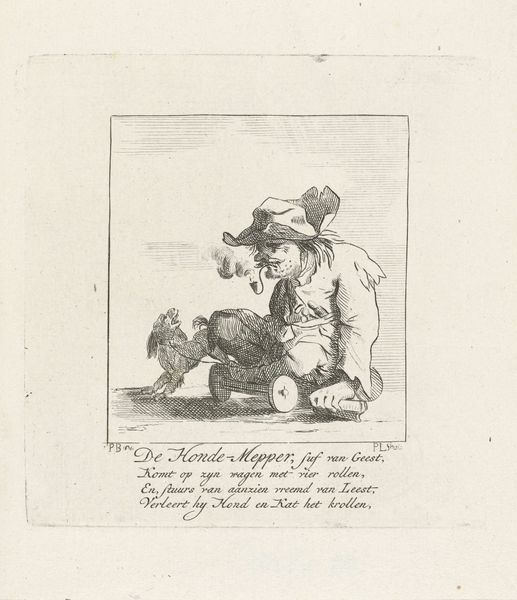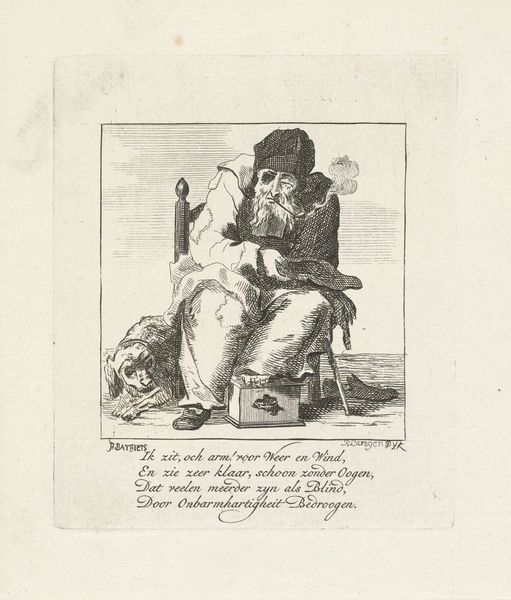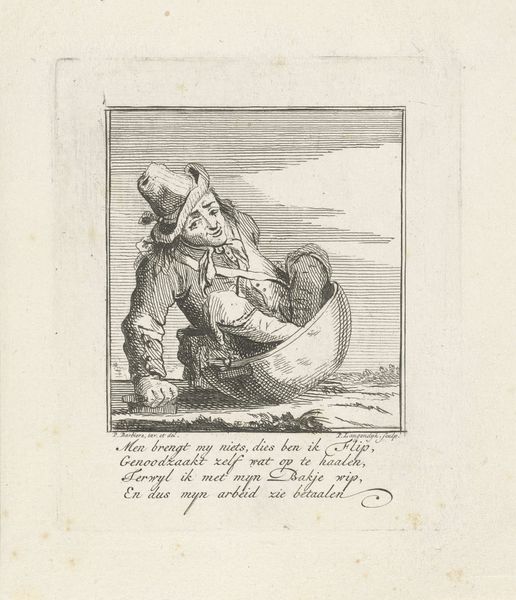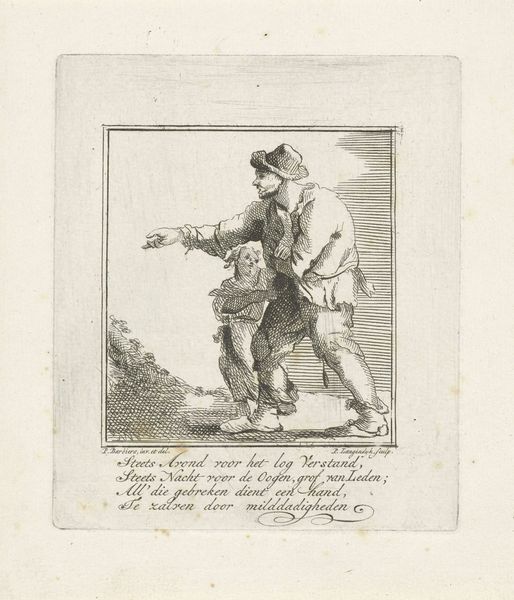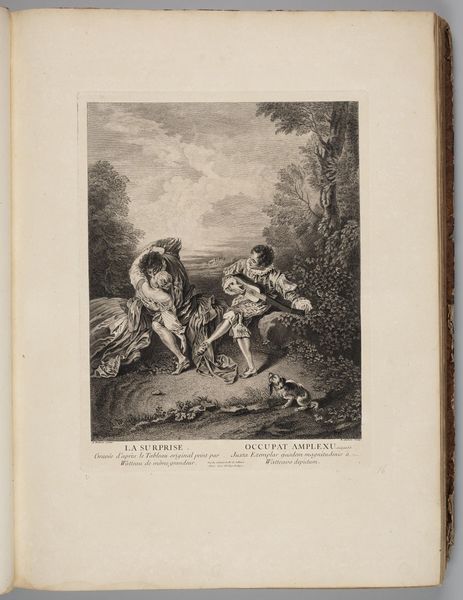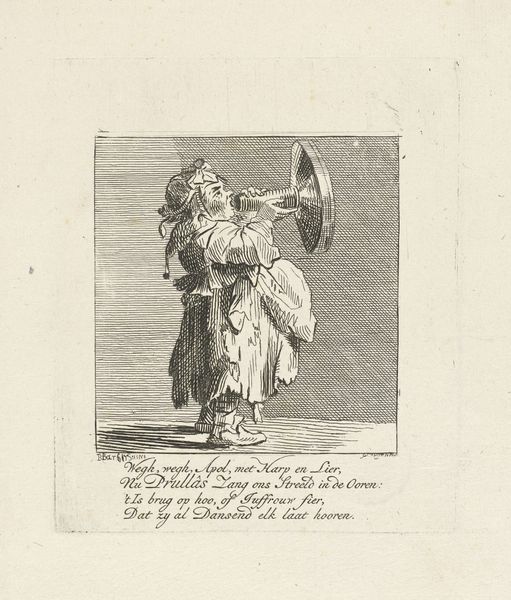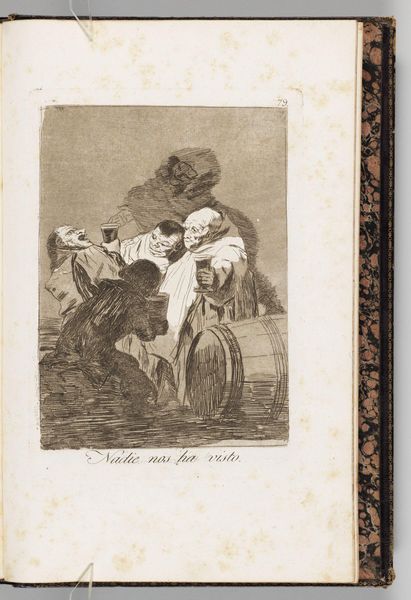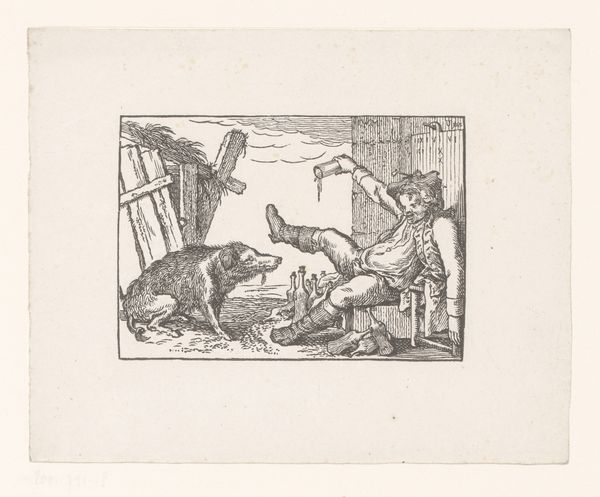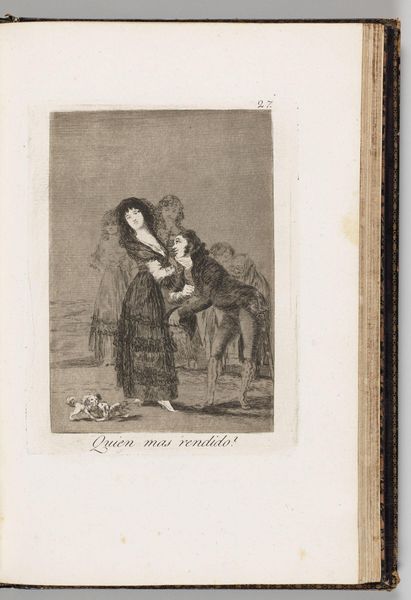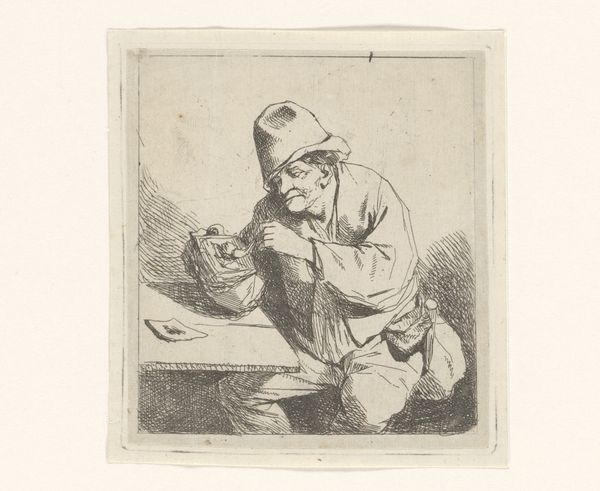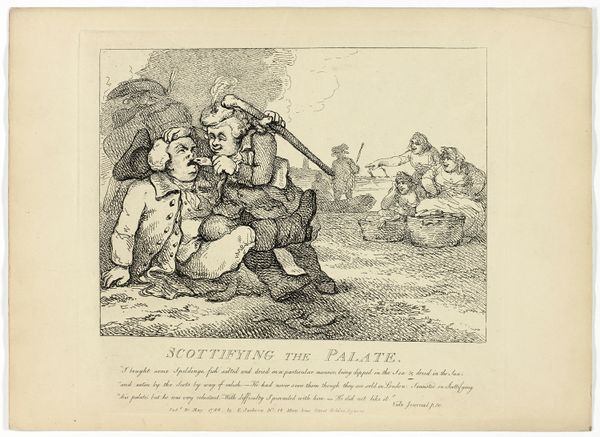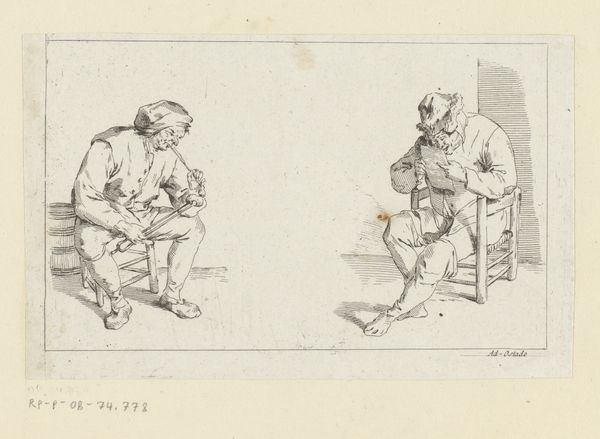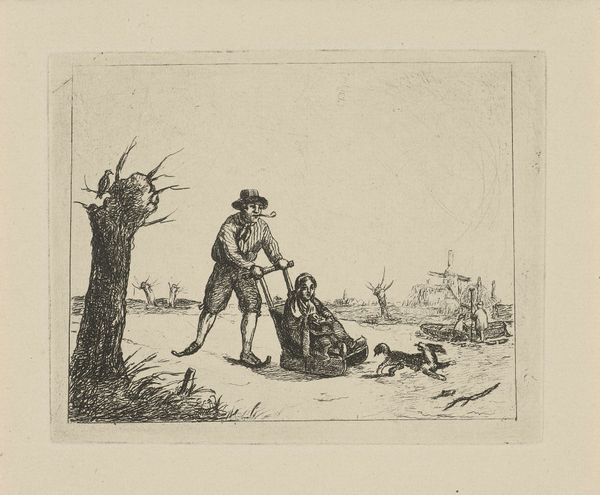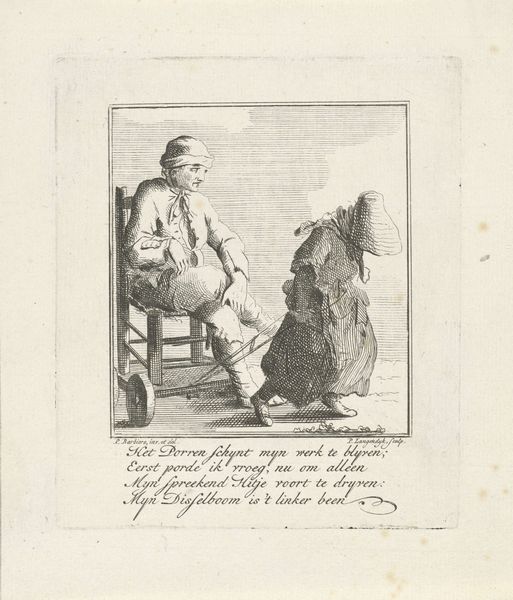
Dimensions: height 136 mm, width 115 mm
Copyright: Rijks Museum: Open Domain
This etching shows a man resting his leg on a wheeled plank, and was made by Pieter Langendijk the Younger in the Netherlands around 1780. Here, Langendijk engages with a common theme in Dutch art: the portrayal of everyday life, but through the lens of someone who has suffered misfortune. The image creates meaning through visual codes: the man’s ragged clothing, his pained expression, and the crude device supporting his leg all speak to the socio-economic realities of the time. The Netherlands in the late 18th century was experiencing economic decline, leading to increased poverty and social inequality. Prints like these played a crucial role in shaping public sentiment and fostering empathy for those less fortunate. To fully appreciate the print, we need to delve into the cultural context of the time. Contemporary sources, such as pamphlets and newspapers, would shed light on the prevailing attitudes toward poverty and disability. Langendijk's work, in its poignant simplicity, reflects a society grappling with its own social conscience.
Comments
No comments
Be the first to comment and join the conversation on the ultimate creative platform.
